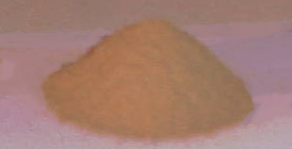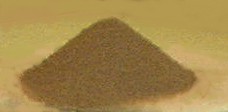Find Your Chinese Herbal Remedy
Concentrated Powders - Frequently Asked Questions
What are Powdered Extracts?
 Bai Shao
Bai Shao |
|
Powders (once called granules or granulars) are made
from decoctions of raw herbs. They are cooked in the traditional
style with water as a tea. The liquid extract is then
concentrated and dried to a sticky sap-like substance.
The sap is then mixed with the dried powdered herb and
ground into a fine granule. More
on the extraction process |
The finished product can be made into a suspension or tea
and drunk like tea or mixed with applesauce and eaten. Some
patients prefer to just put spoonfuls directly on their tongue
and wash them down with a little water.
How Strong are the Powders?
 Ding Xian
Ding Xian |
|
Powders are a 5:1 concentration. Each gram of powder
equals the potency of 5 grams of raw herb in decoction.
When patients make teas at home, errors and irregularities
in the cooking process lead to a significant to loss of
potency. |
Because powders are prepared under the strictest laboratory
conditions, powders are actually much stronger than the numbers
suggest. Each batch of powders is tested to assure that it
provides a minimum of active ingredient per gram. Therefore,
powders can be used at a slightly lower dose than raw herbs.
How Safe are Powders?
Granules are lab-tested for heavy metals,
bacteria and fungus. Plus KPC granules are batch tested for
pesticide and herbicide residues on a regular basis. Patients
can only purchase herbs via a prescription from a licensed
acupuncturist.
More on the extraction process
How are Powders more Flexible than other
forms of Herbs?
Granule formulas can be prepared to your
exact specifications. You choose the ingredients and dosage.
You are not limited by a manufacturer's premade formulas where
you can't delete ingredients or change doses to suit your
patient. This way, you can practice chinese herbal medicine
to its fullest and give your patients the best medicine
for them.
Aren't Powders more Expensive than other
Patent Herbs?
Since powders are more potent than other solid forms of patent
and give the practitioner maximum flexibility in prescribing,
powders really shouldn't be compared to other forms of patents.
However, they are very close in price.
A two week course of powders will cost the patient around
$28. While this is slightly more than raw herbs,
the convenience more than makes up for it. Patients
often reject or eventually give up on raw herbs because of
the time it takes - and the smell! Granules avoid both of
these problems.
Practitioners are free markup the price for
their patients. That can mean thousands of dollars per year
in profits. In fact, because you collect the money including
your mark-up, you make money before you've even ordered the
herbs! Many acupuncturists make the majority of their earnings
from herb sales.
Why do you recommend dosing twice a day?
We recommend dosing no more frequently than 2 times per day.
Patient compliance can be as high as 90% when the dosage is
once per day. Compliance drops by 20% when a second dose is
added. With the addition of a third dose, patient compliance
plummets another 50%. So, while herbs three times a day may
be ideal for the patient, in our experience, the more frequent
the dosage, the less likely your patient is to take the herbs
at all.
More on The Extraction Process
KPC Herbs are produced by Kaiser Pharmaceutical
Co., Ltd. (KP Ltd.) in Taiwan and imported into the United
States by KPC Products, Inc. KP Ltd. is one of the oldest
and most respected producers of concentrated Chinese herbs
in the world. Its state-of-the-art facilities have earned
the Good Manufacturing Practice (GMP) certification of the
Department of Health, Republic of China and Commonwealth Department
of Health, Australia.
 Chuan Xiong
Chuan Xiong |
The attention
to quality extends from the selection of herbs
through the entire manufacturing process. The manufacture
of concentrates follows demanding and complex scientific
procedures; an outline of the process is as follows: |
|
- Raw herbs are checked for quality
by well-trained personnel and with scientific instruments.
- The herbs are prepared according to the
tenets of Chinese medicine. Some herbs are stir-fried,
others are wine-fried, etc.

The following processes take place in a clean-room
environment:
- Single herbs or formulas are cooked in
large vats of water in a closed and controlled environment
while essential oils are collected for reintroduction
later on.
- The herbs are removed from the decoction;
the liquid is further concentrated, essential oils
are reintroduced, and then the mixture is sprayed into a
vacuum drying chamber.
- The concentrate forms on small particles
of raw herbs (or, in some cases, starch) that are introduced
into the chamber, and then is vacuum-dried at low
temperature.
- The concentrated herbs are then siphoned
into a separate clean-room where they are bottled, labeled
and sealed.
- After processing, the product undergoes
stringent control procedures to ensure that each lot contains
a consistent amount of active constituents.
- Further, each lot is subjected to strict
tests for bacteria count, E. coli, salmonella and
heavy metals
|